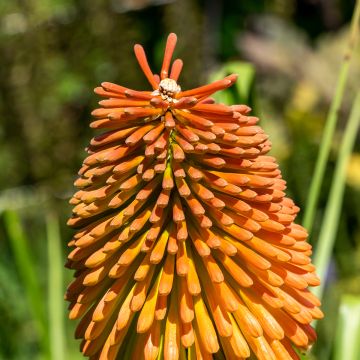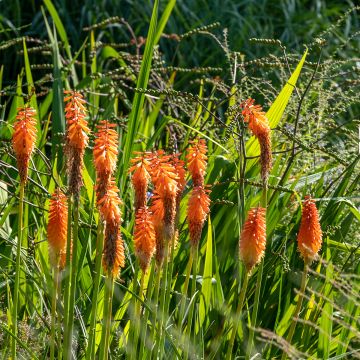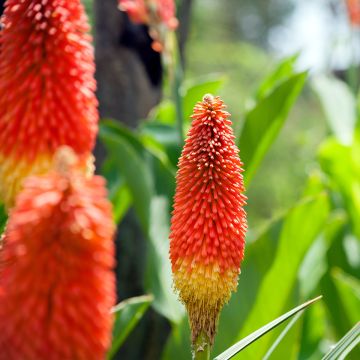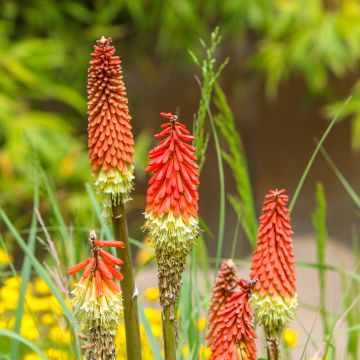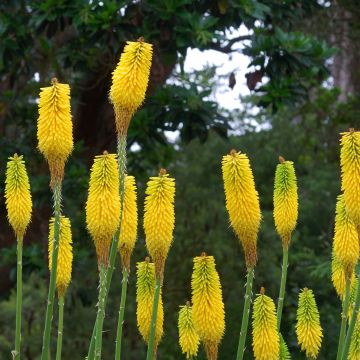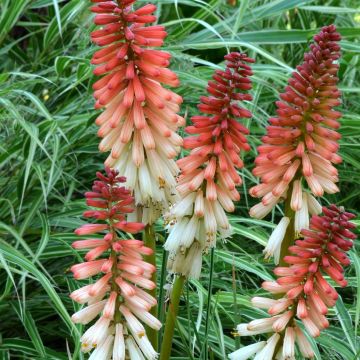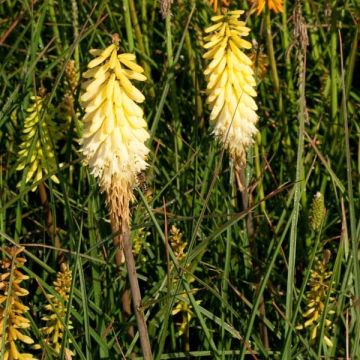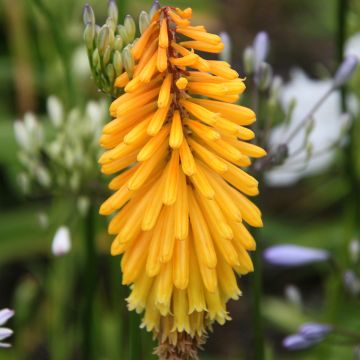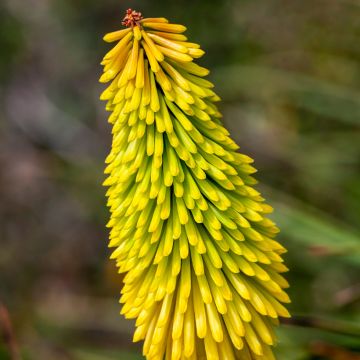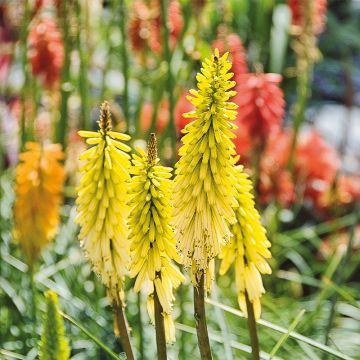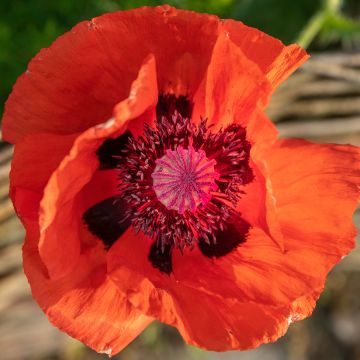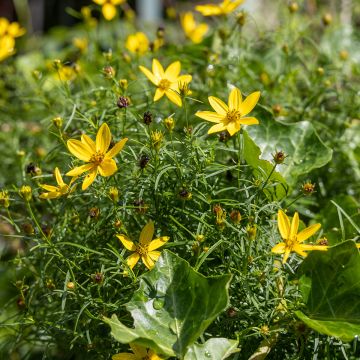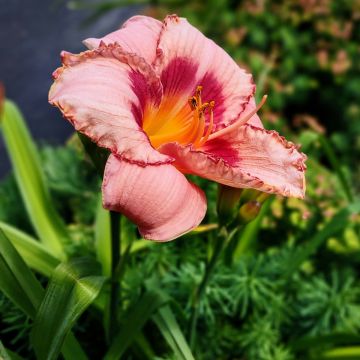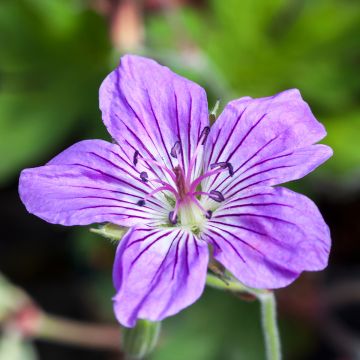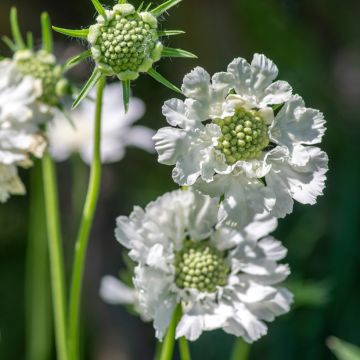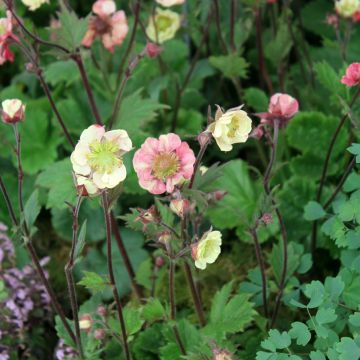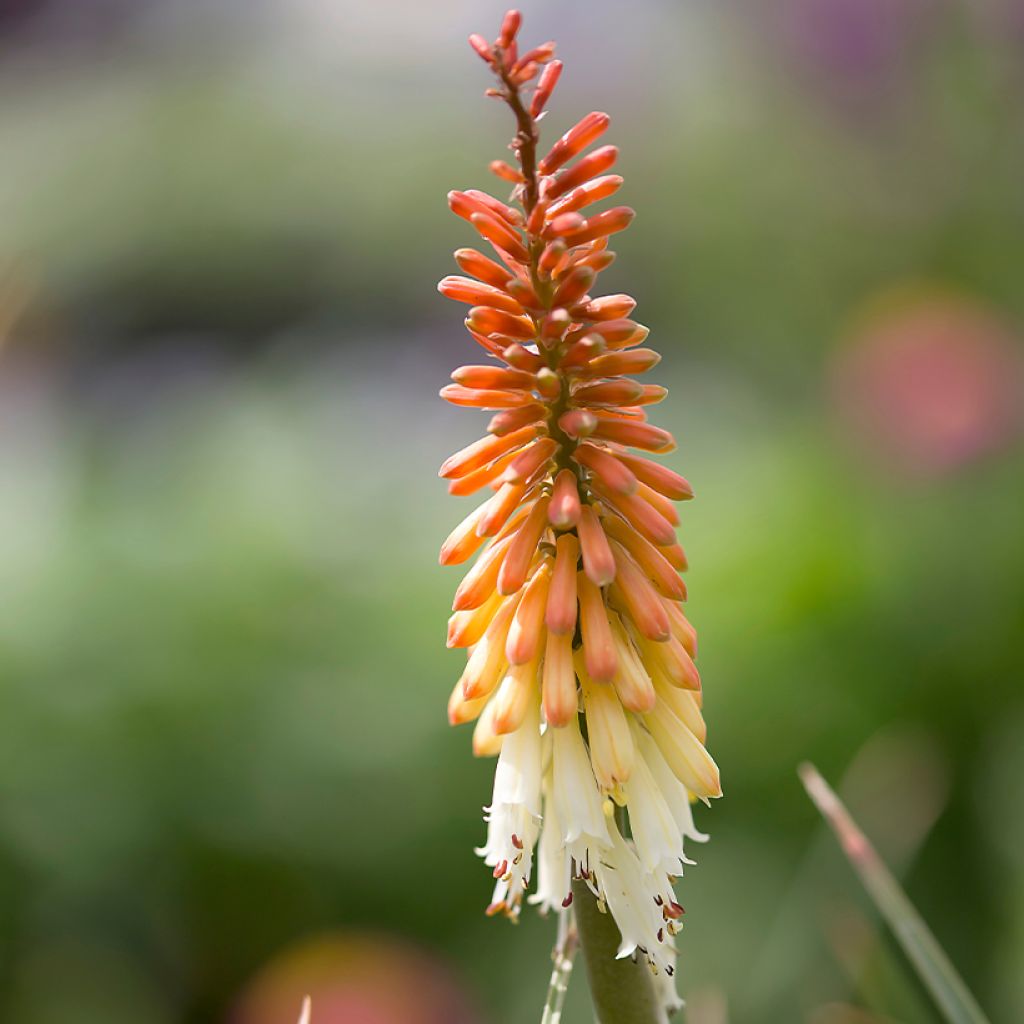

Kniphofia pauciflora Flamenco - Red Hot Poker
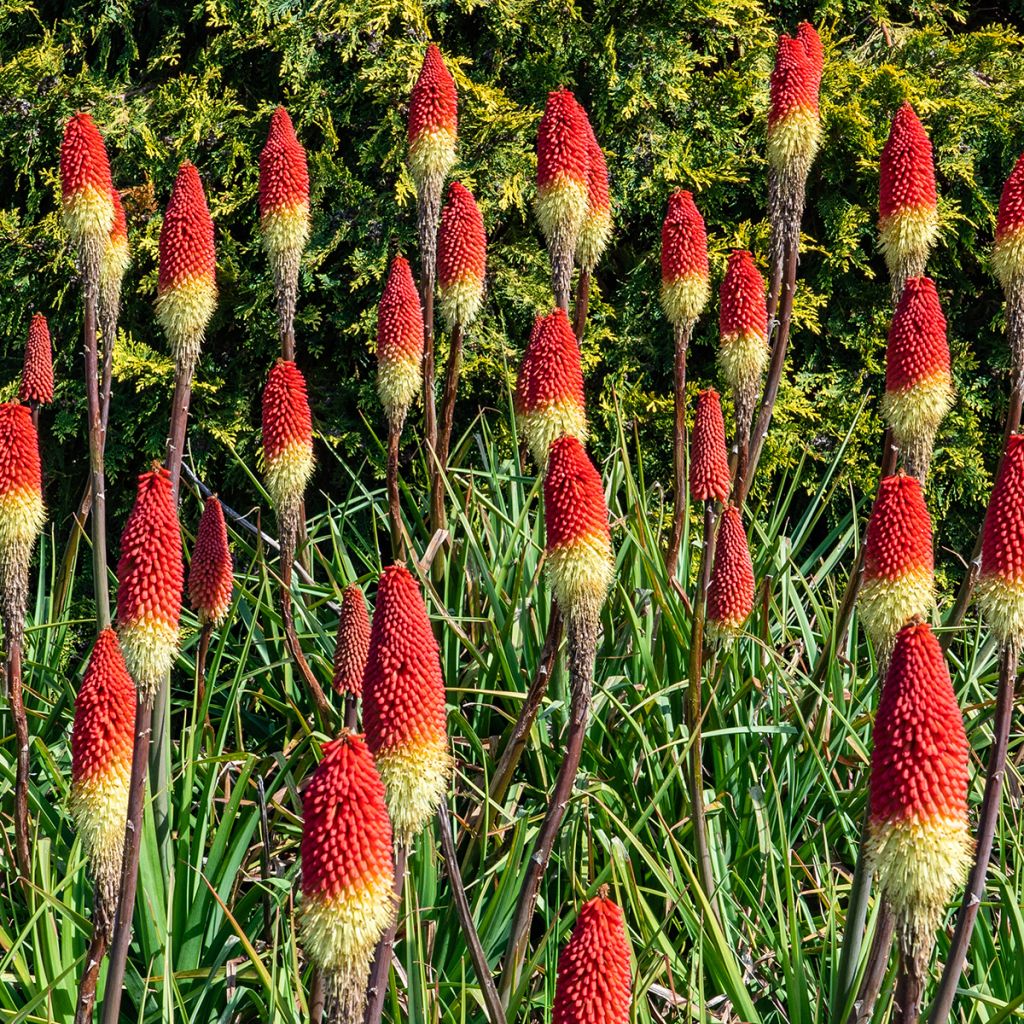

Kniphofia pauciflora Flamenco - Red Hot Poker
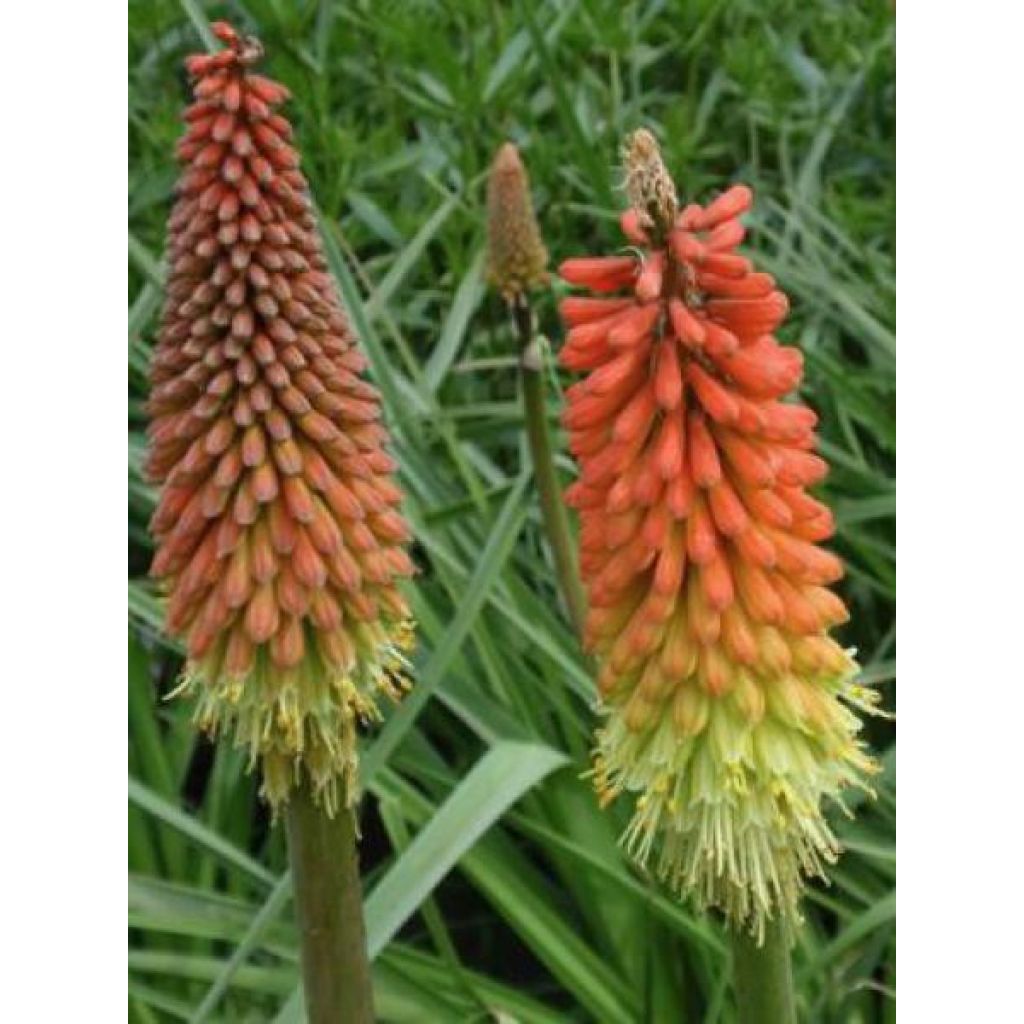

Kniphofia pauciflora Flamenco - Red Hot Poker
Kniphofia pauciflora Flamenco - Red Hot Poker
Kniphofia x uvaria Flamenco
Red Hot Poker, Tritoma, Torch Lily, Poker Plant
This item cannot be shipped to the selected country
Delivery charge from €5.90
More information
Schedule delivery date,
and select date in basket
This plant carries a 12 months recovery warranty
More information
We guarantee the quality of our plants for a full growing cycle, and will replace at our expense any plant that fails to recover under normal climatic and planting conditions.
From €5.90 for pickup delivery and €6.90 for home delivery
Express home delivery from €8.90.
Does this plant fit my garden?
Set up your Plantfit profile →
Description
The Kniphofia 'Limelight' is a new variety of tritoma with a compact habit, displaying a flowering with decidedly acidic tones. This curious plant, very green, showcases bright inflorescences in the shape of almost fluorescent spikes in the summer, composed of lime green flowers that open to lemon yellow at the top of the spike. Not very tall, sturdy against the wind, its flowering dominates a beautiful clump of gracefully arching leaves, in a striking shade of green, which remain attractive all year round. This variety, easy to combine in the garden, is also not very demanding in terms of soil, hardy, not water-hungry, and resistant to heat.
The Kniphofia 'Limelight' belongs to the asphodel family. This perennial is a hybrid obtained by cross-breeding various species native to South and East Africa, including the South African Kniphofia pauciflora. It is a plant with fleshy rhizomes. It has a particularly compact habit and flowers with an unusual color, in a range of green and yellow. This plant forms a spreading, fountain-like clump, formed by tough, gutter-shaped leaves. When in bloom, it will reach about 60cm (24in) in height and 45cm (18in) in width. The flowering period is in summer, from July to September, rising above the foliage at the end of stout, solid, leafless, cylindrical stems. The inflorescence, nectar-bearing and nectar-producing, is a dense terminal cluster of tubular, pendant flowers, with a color evolving from acidic green to green-yellow, ending in lemon yellow. The foliage of this variety is evergreen, decorative, composed of leaves gathered in a large, spreading bunch.
Their exotic appearance already charmed our grandmothers. Tritomas are surprising plants, but nevertheless very sturdy, perfect candidates for cottage gardens or wildflower beds where they light up with colorful torches. Pair the Kniphofia 'Limelight' with all the flowers in the garden: just like lady's mantle and certain euphorbias, it has very fresh tones that enhance all the other shades. It goes particularly well with chocolate, caramel, orange, or red tones. For example, combine it with colorful heucheras, magenta-red hollyhocks, or purple grasses like Pennisetum setaceum rubrum for color and texture contrast. Tritomas go well with lightly flowering perennials and provide structure to the beds, just like grasses do.
Report an error about the product description
Flowering
Foliage
Plant habit
Botanical data
Kniphofia
x uvaria
Flamenco
Asphodelaceae
Red Hot Poker, Tritoma, Torch Lily, Poker Plant
Cultivar or hybrid
Other Kniphofia - Red-Hot Pokers
Planting and care
Plant Kniphofia Limelight in any ordinary, well-drained soil in full sun. Make sure the plant does not lack too much water in summer, as this is when it needs it most. This variety is hardy down to -12/-15°C. To prevent an especially cold winter, you can install a thick mulch around the stump to insulate it from the frost. This plant tolerates some drought, heat, wind, and the special conditions of the seaside. Apply an organic fertilizer at the start of the growing season. Remove wilted stems and flowers in autumn.
Planting period
Intended location
Care
This item has not been reviewed yet - be the first to leave a review about it.
Summer flowering perennials
Haven't found what you were looking for?
Hardiness is the lowest winter temperature a plant can endure without suffering serious damage or even dying. However, hardiness is affected by location (a sheltered area, such as a patio), protection (winter cover) and soil type (hardiness is improved by well-drained soil).

Photo Sharing Terms & Conditions
In order to encourage gardeners to interact and share their experiences, Promesse de fleurs offers various media enabling content to be uploaded onto its Site - in particular via the ‘Photo sharing’ module.
The User agrees to refrain from:
- Posting any content that is illegal, prejudicial, insulting, racist, inciteful to hatred, revisionist, contrary to public decency, that infringes on privacy or on the privacy rights of third parties, in particular the publicity rights of persons and goods, intellectual property rights, or the right to privacy.
- Submitting content on behalf of a third party;
- Impersonate the identity of a third party and/or publish any personal information about a third party;
In general, the User undertakes to refrain from any unethical behaviour.
All Content (in particular text, comments, files, images, photos, videos, creative works, etc.), which may be subject to property or intellectual property rights, image or other private rights, shall remain the property of the User, subject to the limited rights granted by the terms of the licence granted by Promesse de fleurs as stated below. Users are at liberty to publish or not to publish such Content on the Site, notably via the ‘Photo Sharing’ facility, and accept that this Content shall be made public and freely accessible, notably on the Internet.
Users further acknowledge, undertake to have ,and guarantee that they hold all necessary rights and permissions to publish such material on the Site, in particular with regard to the legislation in force pertaining to any privacy, property, intellectual property, image, or contractual rights, or rights of any other nature. By publishing such Content on the Site, Users acknowledge accepting full liability as publishers of the Content within the meaning of the law, and grant Promesse de fleurs, free of charge, an inclusive, worldwide licence for the said Content for the entire duration of its publication, including all reproduction, representation, up/downloading, displaying, performing, transmission, and storage rights.
Users also grant permission for their name to be linked to the Content and accept that this link may not always be made available.
By engaging in posting material, Users consent to their Content becoming automatically accessible on the Internet, in particular on other sites and/or blogs and/or web pages of the Promesse de fleurs site, including in particular social pages and the Promesse de fleurs catalogue.
Users may secure the removal of entrusted content free of charge by issuing a simple request via our contact form.
The flowering period indicated on our website applies to countries and regions located in USDA zone 8 (France, the United Kingdom, Ireland, the Netherlands, etc.)
It will vary according to where you live:
- In zones 9 to 10 (Italy, Spain, Greece, etc.), flowering will occur about 2 to 4 weeks earlier.
- In zones 6 to 7 (Germany, Poland, Slovenia, and lower mountainous regions), flowering will be delayed by 2 to 3 weeks.
- In zone 5 (Central Europe, Scandinavia), blooming will be delayed by 3 to 5 weeks.
In temperate climates, pruning of spring-flowering shrubs (forsythia, spireas, etc.) should be done just after flowering.
Pruning of summer-flowering shrubs (Indian Lilac, Perovskia, etc.) can be done in winter or spring.
In cold regions as well as with frost-sensitive plants, avoid pruning too early when severe frosts may still occur.
The planting period indicated on our website applies to countries and regions located in USDA zone 8 (France, United Kingdom, Ireland, Netherlands).
It will vary according to where you live:
- In Mediterranean zones (Marseille, Madrid, Milan, etc.), autumn and winter are the best planting periods.
- In continental zones (Strasbourg, Munich, Vienna, etc.), delay planting by 2 to 3 weeks in spring and bring it forward by 2 to 4 weeks in autumn.
- In mountainous regions (the Alps, Pyrenees, Carpathians, etc.), it is best to plant in late spring (May-June) or late summer (August-September).
The harvesting period indicated on our website applies to countries and regions in USDA zone 8 (France, England, Ireland, the Netherlands).
In colder areas (Scandinavia, Poland, Austria...) fruit and vegetable harvests are likely to be delayed by 3-4 weeks.
In warmer areas (Italy, Spain, Greece, etc.), harvesting will probably take place earlier, depending on weather conditions.
The sowing periods indicated on our website apply to countries and regions within USDA Zone 8 (France, UK, Ireland, Netherlands).
In colder areas (Scandinavia, Poland, Austria...), delay any outdoor sowing by 3-4 weeks, or sow under glass.
In warmer climes (Italy, Spain, Greece, etc.), bring outdoor sowing forward by a few weeks.

































